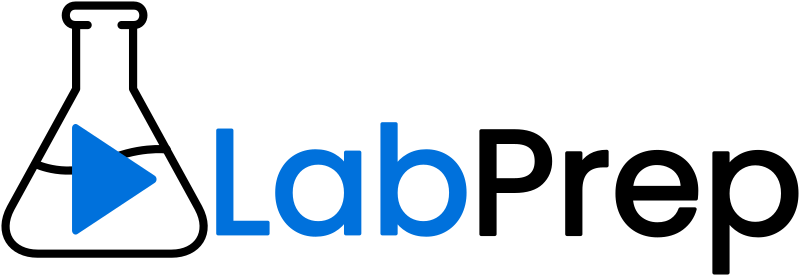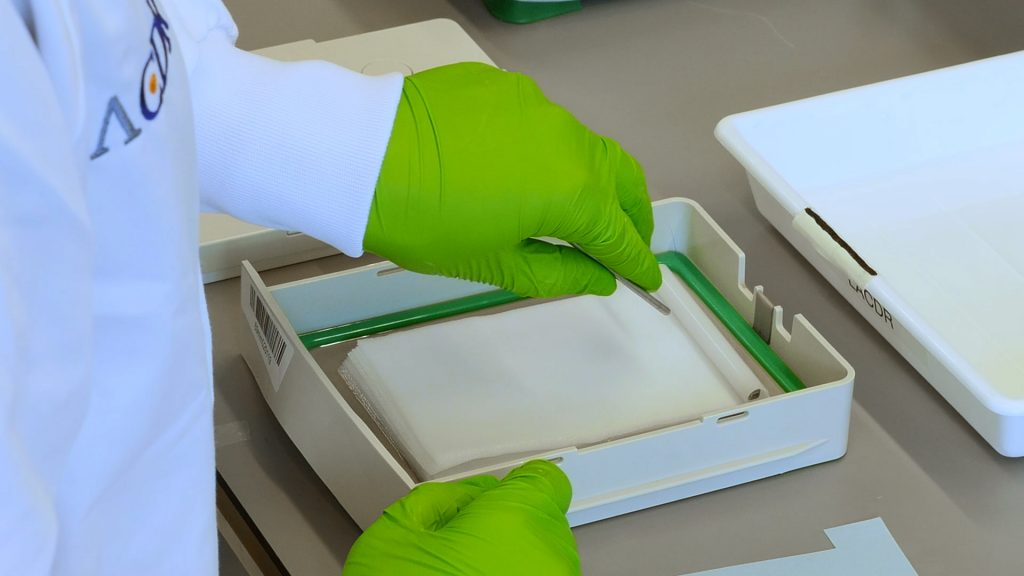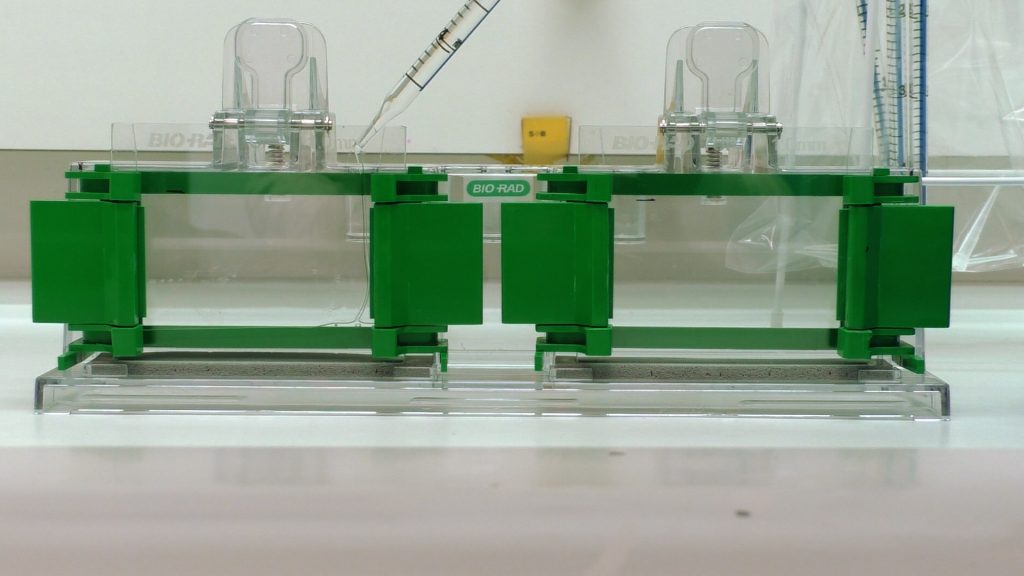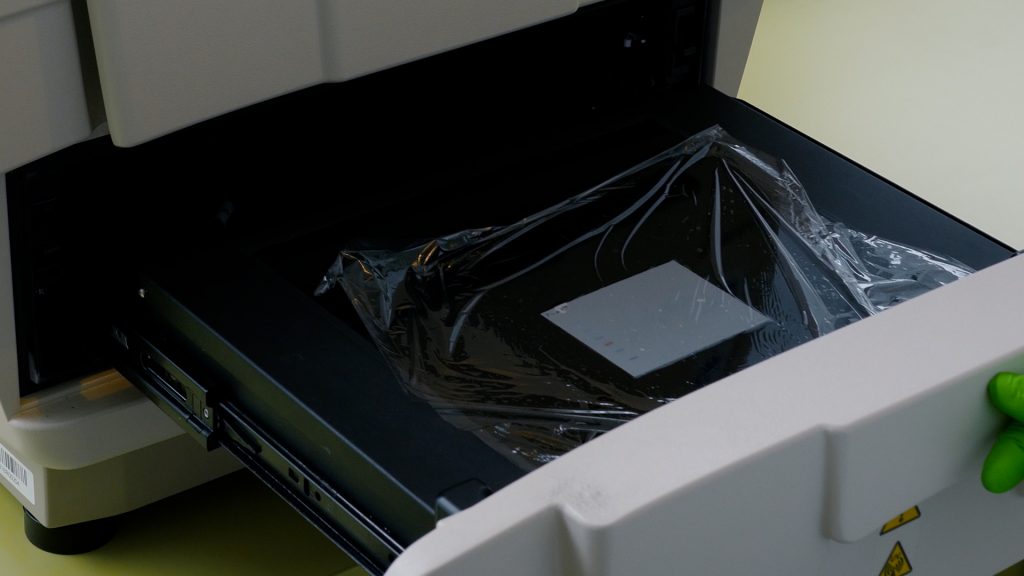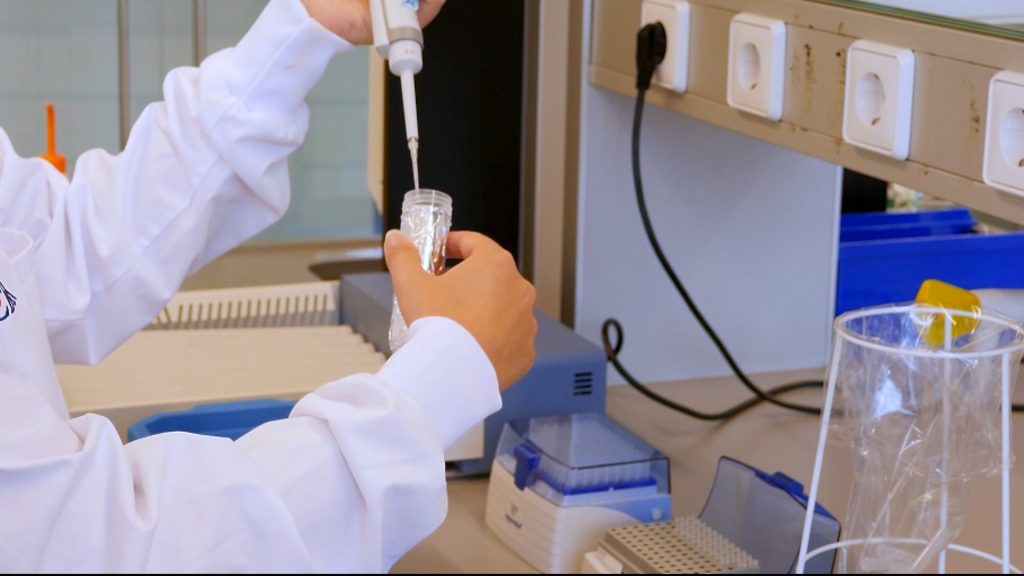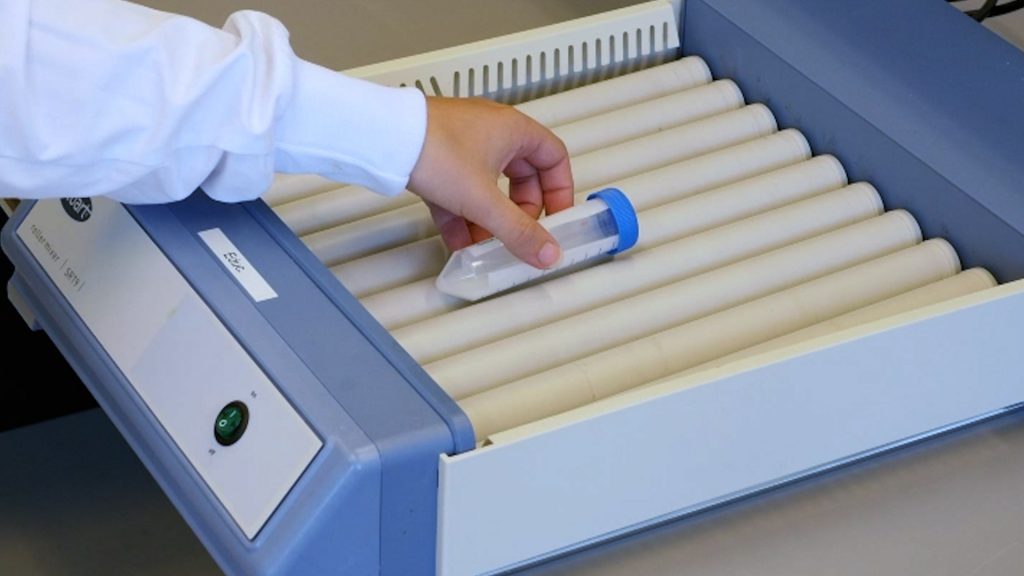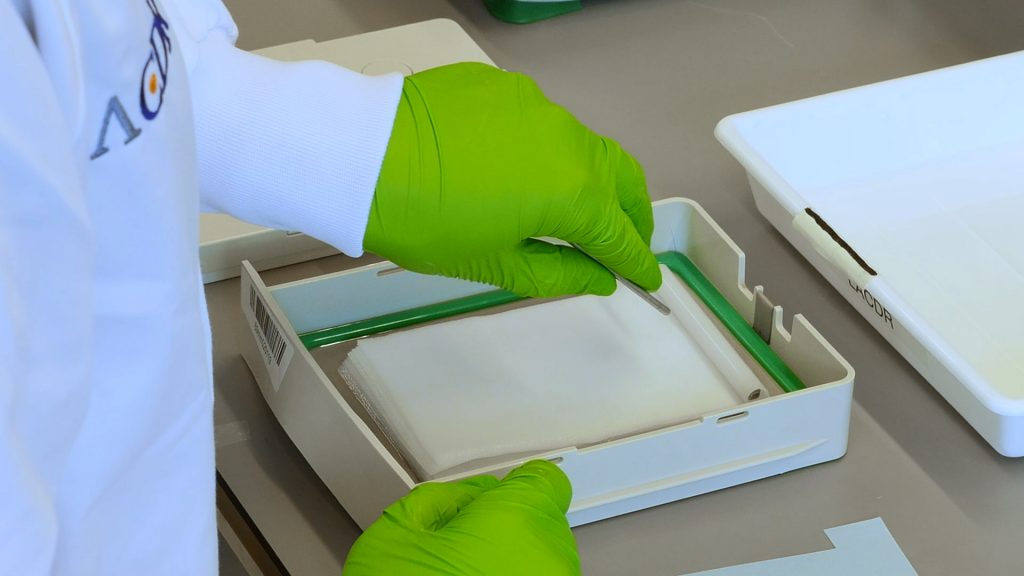Western blot protein detection
This video shows the principle behind western blot protein detection
- Tineke Bijl
-
(0)
- 0 enrolled students
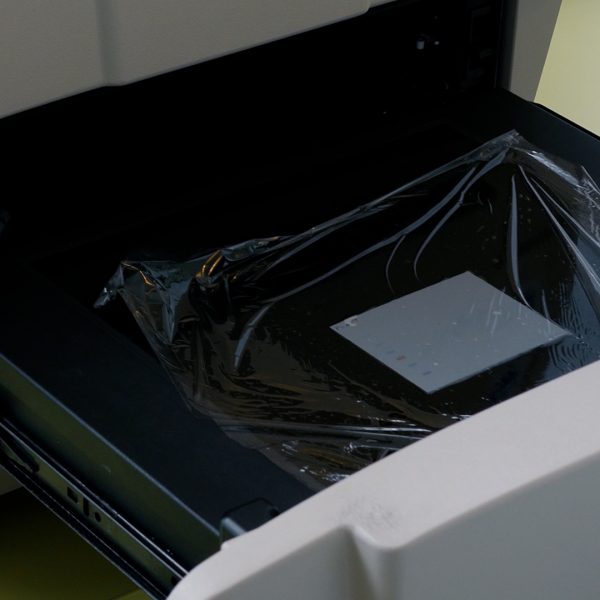
Description
Non-interactive video download link (mp4).
The script that has been used to create the video shown above can be downloaded as excel script file.
| 1 | Place the blots on the plateau of the Chemidoc MP Imaging System (Bio-Rad). |
| 2 | Gently place cling film over the blots and remove any air bubbles. |
| 3 | Check out the CY-5 channel first (which antibody is this?). |
| 4 |
|
| 5 | Incubate in the dark for 5 minutes and scan the blots. |
Welk antilichaam detecteer je nu? a. Rabbit-Alexa 647 b. Mouse-Alexa 647 c. Rabbit-HRP d. Mouse-HRP Feedback if incorrect: Niet goed. Kijk nog een keer naar de datasheets van de antilichamen. Deze zijn te vinden in het materialenoverzicht. |
Welk antilichaam detecteer je nu? a. Rabbit-Alexa 647 b. Mouse-Alexa 647 c. Rabbit-HRP d. Mouse-HRP Feedback if incorrect: Niet goed. Kijk nog een keer naar de datasheets van de antilichamen. Deze zijn te vinden in het materialenoverzicht. |
Which antibodies will be imaged in which channel?
|
Which statement about excitation and emission wavelengths is correct?
|
Why is it sometimes necessary to use a secondary antibody (indirect detection)?
Feedback if correct: Correct! Multiple secondary antibodies can bind on one first antibody. This way, more substrate can be converted by the bound enzyme. The detection signal will then be amplified. The use of the first and second antibody combination is also called indirect detection. Feedback if incorrect: Why would you choose indirect detection? |
On which mechanism is chemiluminescence based on?
Feedback if correct: Correct! This reaction emits light. Feedback if incorrect: How is light initiated? |
Download zip to import in LabBuddy.
Please make sure that your product exists and valid for this course
- Skill levelIntroduction video
- CategoryBiochemistry
Related videos
-
Free
Pouring SDS PAGE gel
-
Free
Blocking membrane
Copyright information
This video is created by Leiden Academic Centre for Drug Research (LACDR), Faculty of Science at Leiden University under a open Creative Commons Attribution-NonCommercial-ShareAlike 4.0 International License. When using this video in its original version please refer to www.labprep.video. When adapting the video, mention the source ‘adapted based on the original version that is created by the labprep.video team’. It is not allowed to use the video for commercial purposes without consultation with the creators. You can contact us via info@labprep.video.
